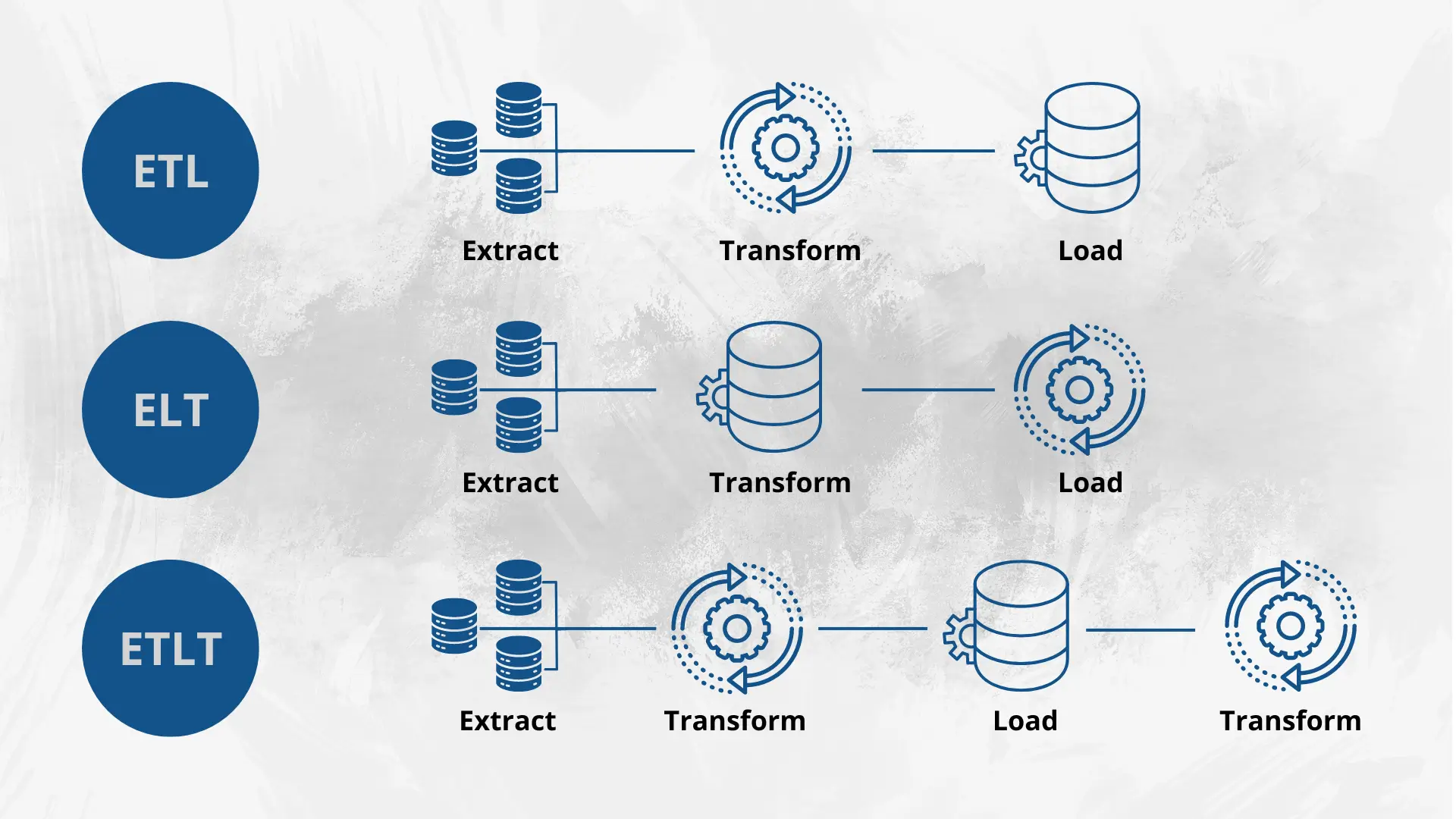
Business Intelligence
Understanding ETL, ELT, and ETLT: Navigating Data Integration Approaches

Data integration is a critical process in any organization's data strategy. With various approaches like ETL, ELT, and ETLT available, choosing the right one can significantly impact the efficiency, flexibility, and performance of your data systems. In this blog, we'll explore what each approach entails, their benefits and challenges, and how to determine which method is best suited for your needs.
1. What is ETL?
Extract, Transform, Load (ETL) is the traditional approach to data integration. This method involves extracting data from multiple sources, transforming it according to predefined rules, and then loading it into a target destination, such as a data warehouse. ETL is ideal when data quality and consistency are paramount, and the destination schema is well-defined. It requires significant upfront design but facilitates faster querying and analysis by reducing the load on the destination system.
2. What is ELT?
Extract, Load, Transform (ELT) is a more modern approach that leverages the processing power of the destination system. In ELT, data is extracted and loaded into the target system in its raw form, and transformations are applied as needed. This method is advantageous when dealing with large volumes of data and when the destination can handle flexible schemas, such as cloud-based data lakes. While ELT reduces upfront effort, it increases the processing demands on the destination system.
3. What is ETLT?
Extract, Transform, Load, Transform (ETLT) combines elements of both ETL and ELT. Data is partially transformed before loading, and additional transformations are performed on demand. This hybrid approach is particularly useful when data quality is crucial, but the data volume and variety are also significant. ETLT strikes a balance between design effort and system load, making it suitable for cloud-based data warehouses.
4. How to Choose the Best Approach?
Selecting the right approach depends on several factors, including the nature of your data, the capabilities of your destination system, and your business needs. Consider the following:
| Criterion | ETL | ELT | ETLT |
|---|---|---|---|
| Data Volume | Suitable for smaller data volumes. | Ideal for large data volumes. | Suitable for large volumes with partial upstream transformation. |
| Data Variety | May require more work to handle various data sources. | Handles diverse data sources more effectively. | Can efficiently process diverse data thanks to increased flexibility. |
| Infrastructure | Suitable for traditional data warehouses. | Ideal for cloud-based systems. | Suitable for cloud-based data warehouses with hybrid capabilities. |
| Performance | Reduces load on the destination system through prior transformation. | High-performance systems benefit from processing in the destination. | Offers a balance between prior transformation and downstream processing for resource-intensive environments. |
| Flexibility | Less flexible for complex transformations. | More flexible but requires powerful infrastructure. | Offers high flexibility for complex transformations. |
5. Benefits and Challenges of Each Approach
- ETL: Ensures data quality, reduces destination load, but requires more upfront effort.
- ELT: Handles diverse data with less initial effort but increases processing demands.
- ETLT: Balances quality and flexibility but may be more complex to implement.
6. Best Practices for Data Integration
Regardless of the approach, follow these best practices:
- Clearly define business objectives and align them with your data strategy.
- Assess your data sources, destination, volume, variety, and budget.
- Design and document your data processes, including validation and security.
- Regularly test and monitor your integration processes.
- Periodically review and update your strategy to adapt to changes.
Conclusion:
Choosing between ETL, ELT, and ETLT depends on your specific data needs and infrastructure. Each method offers unique advantages and challenges. By understanding these approaches and aligning them with your business goals, you can optimize your data integration process and drive more informed decision-making.